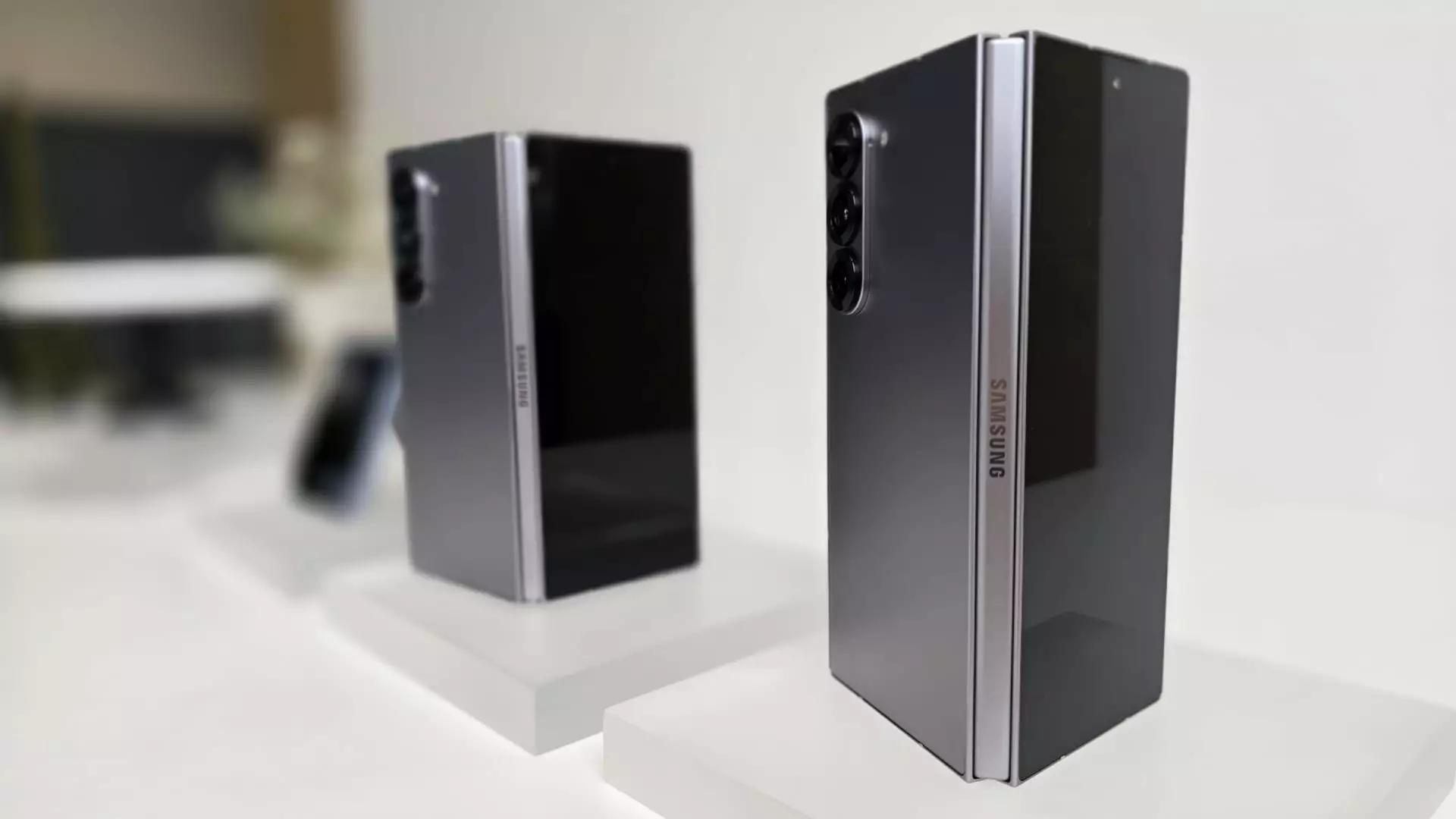As Samsung prepares to unveil a sleeker iteration of its Galaxy Z Fold series next month, the incumbent tech giant finds itself ensnared in a fiercely competitive landscape. The challenge is not merely to innovate but to reclaim its position against a swarm of nimble Chinese competitors, particularly Honor and Oppo, who’ve taken substantial strides toward creating thinner, lighter foldable devices. The race for the slimmest foldable phone isn’t just about aesthetics; it represents a paradigm shift in consumer expectations, where thickness no longer translates to durability or functionality.
The Weight of Expectations
With the launch of its first foldable phone in 2019, Samsung placed itself at the forefront of a technological revolution, showcasing the potential of folding screens. However, the excitement surrounding its pioneering product has dimmed, partly due to thickness becoming an unwelcome compromise for many consumers. As Ben Wood, chief analyst at CCS Insight, highlights, “people aren’t prepared to accept the compromise for a thicker and heavier phone to get the real estate that a folding phone can deliver.”
This sentiment candidly underscores the zeitgeist of today’s smartphone market. Consumers expect innovation without sacrificing usability, a demand that has propelled rival companies to create devices that are not just thinner but also more user-friendly. When comparing specifications, Samsung’s latest Galaxy Z Fold6, with its 12.1 mm thickness, pales in comparison to rivals like Oppo’s Find N5 (8.93 mm) and Honor’s Magic V3 (9.2 mm). While Samsung has historically been synonymous with cutting-edge technology, its failure to adapt in terms of form factor could make it look more like the tortoise than the hare in this race.
Chinese Competitors on the Rise
The rising tide of Chinese smartphone manufacturers has thrown traditional market dynamics into disarray. With Honor and Oppo launching impressive foldables that are significantly lighter and thinner, the stakes are high for Samsung. As these competitors march forward with increasingly sophisticated designs, Samsung must not only catch up but also find a way to differentiate its offerings.
The imminent launch of the Galaxy Z series paints a picture of intent—Samsung promises that this newest version will be “the thinnest, lightest, and most advanced foldable yet.” However, the success of such claims remains tethered to the execution of the device’s usability and the experience it offers.
Distraction or Innovation? The Market’s Dilemma
Despite these advancements, it is essential to recognize that the market for foldables has not flourished as anticipated. Predictions indicate that foldable phones will constitute only 2% of the overall smartphone market this year, a statistic that should stir concern within Samsung’s executive corridors. Thinner devices alone may not be a silver bullet that awakens consumer interest. A significant shift in public perception is required to convince users that folding devices serve more than just a novelty factor.
Wood’s insights into the need for consumer education resonate deeply. He cautions that even with thinner models mimicking traditional smartphones, many people remain skeptical about the practicality of foldable technology. From a center-right perspective, this skepticism towards innovation is problematic; it suggests that tech companies must be more adept at articulating the utility of new products rather than relying on market trends alone for validation.
Apple’s Shadow Looms Large
Adding another layer of complexity, Apple has remained conspicuously absent from the foldable fray—an omission that could potentially signal a major shift when it finally enters the market. According to analyst Ming-Chi Kuo, Apple is gearing up to launch a folding iPhone as early as next year. The repercussions of Apple’s entry cannot be understated. If it successfully integrates the foldable concept while maintaining its renowned ecosystem of apps and services, it could draw consumers away from Samsung’s offerings, especially among those already loyal to the Apple brand.
This looming threat could serve as both a motivation and a detriment to Samsung. The urgency within the South Korean company to innovate is palpable, but the path ahead is riddled with complexities that require more than just incremental advancements in design.
As Samsung approaches its upcoming launch, one thing is clear: it must deliver not just a thinner foldable gadget, but an experience that transcends its predecessor—and compete effectively against rivals who are redefining market standards with every release.

